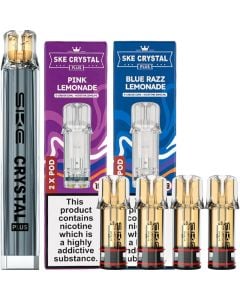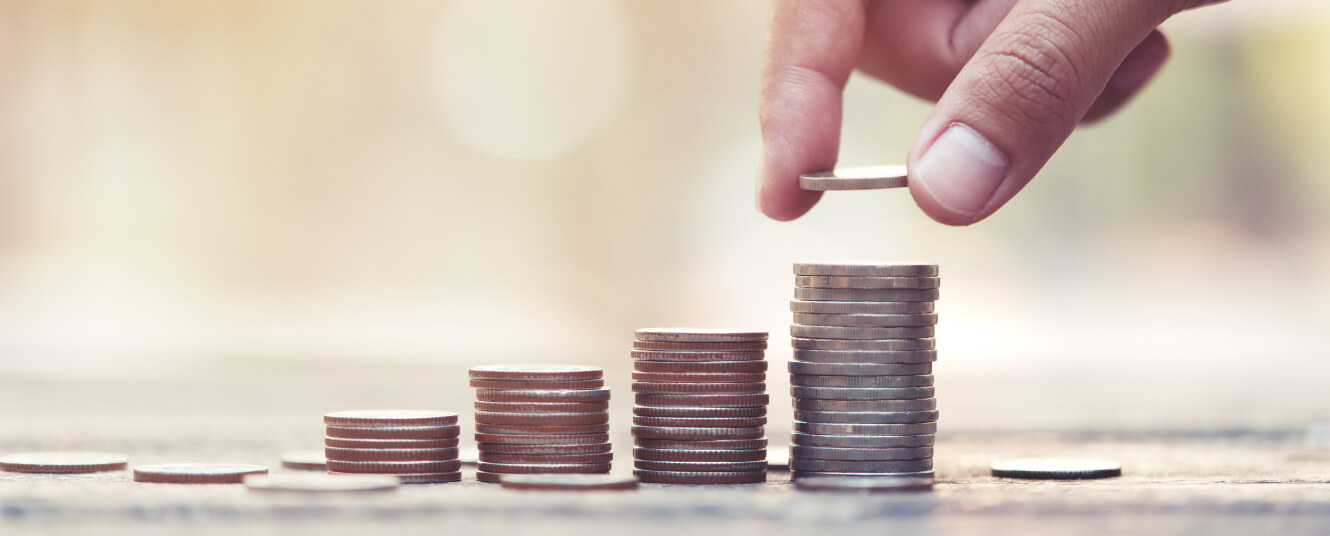- Myth 1: vaping isn’t better than smoking
- Myth 2: Disposable vapes contain as much nicotine as 50 cigarettes
- Myth 3: Vaping damages your lungs
- Myth 4: Vaping is swapping one addiction for another
- Myth 5: Second-hand vapour from vaping is harmful
- Myth 6: Vaping causes popcorn lung
- Myth 7: Vaping is addictive
- Myth 8: People use a vape more frequently than they smoke
- Myth 9: Disposable vapes explode all the time
- Myth 10: Vapes aren’t regulated in the UK
- Myth 11: Smoking cessation services do not say vapes are an option
- Myth 12: The rise in popularity of nicotine pouches is cause for health concerns
- Myth 13: Vaping does not help you quit smoking
- Myth 14: Vaping is harmful to oral health
Lots of people have opinions about vaping, but that doesn’t mean they have the facts. We often see misinformation spread about vapes and e-liquids and these dangerous myths might even stop smokers from switching to vapes. That means they might miss out on the health benefits of quitting cigarettes, all because they don’t have the right information.
We’re here to clean up some common vaping misconceptions, giving you a better idea of how well-regulated vaping is and how it can help people quit smoking.
Myth 1: vaping isn’t better than smoking
According to leading bodies like the Office for Health Improvement and Disparities (OHID), the Royal College of Physicians, Cancer Research UK and the US National Academy of Sciences, vaping is far less harmful than smoking. Vaping is also widely seen as an effective way to quit smoking cigarettes.
According to the NHS, people who use vapes are exposed to far fewer toxins than those who smoke cigarettes. Also, vapes don’t produce tar or carbon monoxide, which are two of the most harmful substances in tobacco smoke. We recently reported that 39% of people falsely think that vaping is as harmful as smoking when the truth is that vaping is at least 95% less harmful than smoking, which we’ve known since 2015 and which was recently re-affirmed in the Nicotine vaping in England: 2022 evidence update.
The recent Cochrane meta-analysis on smoking cessation found that e-cigarettes are as effective at helping smokers to quit as pharmacological options varenicline, commonly referred to as Champix, and cytisine. A clinical trial from the New England Journal of Medicine published in February 2019 also identified vaping as being twice as effective for long-term smoking cessation as common nicotine replacement therapy (NRT) options like nicotine patches and gum, which was reiterated in a subsequent Cochrane review. The trial also identified that using vapes to quit resulted in a faster reduction of coughs and phlegm. Additionally, the NHS reports that two thirds of people who use a vape (along with expert support) successfully quit smoking.
Myth 2: Disposable vapes contain as much nicotine as 50 cigarettes
In the UK, all disposable vapes are subject to regulation which means they contain no more than 2ml of e-liquid with a maximum 20 mg/ml nicotine strength. This is works out at 40mg of nicotine, which delivers around 20mg of nicotine to the user. The average package of twenty cigarettes contains between 200 and 300mg of nicotine and about 20 to 30mg of that nicotine will be absorbed during smoking.
So, a standard disposable vape in the UK delivers as much nicotine as approximately 20 cigarettes.
E-liquids are available in a variety of different nicotine strengths, so you can also choose vapes with a lower percentage of nicotine if this would better reflect your previous nicotine intake from smoking. For example, a vape with a 3 mg/ml e-liquid has a very low nicotine level and while it will offer you the same amount of puffs as a higher percentage of nicotine, it will be the equivalent of smoking far fewer cigarettes. Find out more in our guide to cigarette and nicotine equivalencies.
Myth 3: Vaping damages your lungs
Vaping is a relatively new method of ingesting nicotine, but there has been a lot of attention paid to the potential to damage lungs or harm users. It’s hardly surprisingly that vaping has come under such close inspection, considering the harmful effects of smoking cigarettes.
There was an instance of e-cigarette or vaping associated lung injury, also known as EVALI, which peaked in the USA in 2019. While the exact cause of these instances is difficult to pinpoint, the majority of cases involved e-liquids that contained THC and Vitamin E, both of which are not allowed in UK vapes. It is estimated that 3.6 million people use e-cigarettes in the UK and as of 8 January 2020, the UK government had received 244 suspected adverse reaction reports to the MHRA’s Yellow Card Scheme. The scheme is an open invitation to anyone who is suffering from side effects of any e-cigarettes as well as medicines, vaccines and more. This government run initiative is a method for collecting the kind of valuable information that can help manufacturers and lawmakers alike.
Myth 4: Vaping is swapping one addiction for another
While it is true that e-cigarettes can contain the addictive substance nicotine, switching from smoking to vaping is not swapping one addiction for another, but rather managing your nicotine addiction in a less harmful way.
When you are using traditional cigarettes you are inhaling smoke which contains nicotine along with many other harmful toxins and carcinogens. An e-cigarette on the other hand vaporises an e-liquid, which does not contain these same harmful chemicals and can be considered a 'clean' source of nicotine.
Unlike many other alternative nicotine sources, e-liquids are available in a wide variety of different nicotine strengths. As advised by the NHS, once you have been vaping for some time and are confident that you will not return to smoking, you can start to decrease your nicotine intake by using an e-liquid with a lower nicotine strength.
Myth 5: Second-hand vapour from vaping is harmful
While the second-hand smoke from cigarettes has been found harmful, and we have rules and regulations to limit it, the same can’t be said for the vapour that’s released second-hand from vapes. E-liquids are generally made up of nicotine, flavourings, propylene glycol (PG) and vegetable glycerine (VG) and, unlike smoke, there’s no side-stream vapour emitted from a vape, only the aerosol exhaled by the user.
Public Health England (PHE) carried out an evidence review in 2018 that found no identified health risks of passive vaping to the health of bystander, to date. Organisations are allowed to make their own policies when it comes to allowing people to use vapes on their premises and, aside from keeping those rules in mind, individuals can make their own choices about where to vape.
It's worth thinking about the fact that people with respiratory conditions or asthma can be more sensitive to all kinds of environmental irritants, from changes in temperature to irritants like pollen, and it may be worth taking this into account when thinking about second-hand vapour. You might also want to avoid vaping around babies, children and young people under the age of 18 and please remember, vapes can only legally be sold to adults.
Myth 6: Vaping causes popcorn lung
Popcorn lung (bronchiolitis obliterans) is an uncommon type of lung disease that’s caused by a build-up of scar tissue in the lungs, which blocks the flow of air. It’s not caused by vaping and Cancer Research UK states that e-cigarettes don’t cause the condition that’s known as popcorn lung.
While more research is needed, it is suspected that there is a link between the rare disease and a chemical called diacetyl. This chemical has been used to flavour popcorn and a group of workers in a popcorn factory were affected by the condition, leading to the name. However, bronchiolitis obliterans can happen after infections, when lungs are damaged, or after breathing chemicals that irritate the lungs.
The rumours around a connection between popcorn lung and vaping started because some e-liquids have been known to contain diacetyl. However, The Tobacco and Related Products Regulations 2012 banned the use of diacetyl in vapes in 2016 and no e-liquids in the UK should contain the chemical, although it can be found in cigarette smoke.
The UK Health Security Agency offer further reassurance in their blog post addressing vaping myths, stating:
"Diacetyl is banned as an ingredient from e-cigarettes and e-liquids in the UK. It had been detected
in some e-liquid flavourings in the past, but at levels hundreds of times lower than in cigarette smoke."
If you’re still concerned, you’ll be relieved to know that there are no confirmed cases of vapes linked to popcorn lung.
Myth 7: Vaping is addictive
Vaping itself isn’t addictive. What is addictive is the substance known as nicotine. You can vape using e-liquids that contain no nicotine at all or you can choose e-liquids that have a varying amount of nicotine up to 20 mg/ml (or 2% of the e-liquid total), which is the maximum nicotine strength for e-liquids in the UK. This means you can be vaping with no nicotine at all and therefore not inhaling any addictive substances,
It can be hard to stop using nicotine once you’ve started, which is why many people choose to quit smoking cigarettes by replacing them with vapes. The 2022 report from Public Health England (PHE) and now the Office for Health Improvement and Disparities (OHID) in the Department of Health and Social Care says that alternative nicotine delivery devices like vapes can play an important role in reducing the huge health burden caused by cigarette smoking.
It's also worth remembering that while nicotine is addictive, it is not harmful to the body in and of itself. Find out more in our guide to how nicotine affects the body.
Myth 8: People use a vape more frequently than they smoke
It is quite normal to find that you use your vape more often than you smoke, this is likely because an e-cigarette delivers nicotine in a slightly different way to smoking. When smoking you would usually smoke an entire cigarette and then not have another one for a while, whereas with an e-cigarette users will usually prefer to vape little and often.
As long as your nicotine cravings are being managed, it is okay to reach for your e-cigarette whenever you feel like you need it. By effectively managing your cravings with a vape you are not only using a safer alternative to smoking, but you are also helping ensure you remain smokefree.
Myth 9: Disposable vapes explode all the time
While it’s very unlikely that your disposable vape will explode, especially when it’s been made by a reliable manufacturer, there is a chance that it may explode or catch fire. This is due to the fact that like many phones, laptops, electrics toothbrushes and other modern electrics, they contain lithium batteries. These batteries can sometimes catch fire or explode when they are damaged by something like a drop or exposure to heat.
Batteries can also sometimes malfunction due to defects in their manufacturing, which is why it’s very important to always buy from a reputable seller. You should also always follow the instructions that come with your vape and avoid treating it too roughly, exposing it to temperature extremes or exposing it to water.
If you have a rechargeable disposable vape, only recharge it the number of times that the manufacturer recommends.
Myth 10: Vapes aren’t regulated in the UK
Yes, vapes are regulated in the UK. These regulations are intended to ensure that manufacturers are held to minimum standards for the safety and quality of all e-cigarettes and e-liquids. In fact, the UK has some of the strictest regulations for vapes in the world.
These regulations state that e-cigarette tanks should have a capacity of no more than 2ml, that the maximum volume of nicotine-containing e-liquid for sale in one refill container doesn’t exceed 10ml and that e-liquids are restricted to a nicotine strength of no more than 20 mg/ml.
The regulations also say nicotine-containing products or their packaging must be child-resistant and tamper evident. Certain ingredients are also banned, such as colourings, caffeine and taurine. The Tobacco Products and Nicotine Inhaling Products Regulations are available to be viewed online. Also, manufacturers have to let the UK Medicines and Healthcare products Regulatory Agency (MHRA) know about their new vaping products, so it's always a good idea to buy vapes and e-liquids from reliable companies who are following the rules.
Myth 11: Smoking cessation services do not say vapes are an option
This myth became of particular interest following statements made by an MP at the Eleventh Committee Sitting for the Tobacco & Vapes Bill on 23 January 2025. The MP claimed that smoking cessation services 'do not promote vapes or actively say that they are an option', which is decidedly untrue.
As the Independent British Vape Trade Association (IBVTA) outlined in their letter to the committee, vaping as a smoking cessation tool is supported by the NHS and many other leading public health initiatives, not to mention the Government's 'Swap to Stop' scheme, of which Evapo are a supplier. The National Institute for Health and Care Excellence (NICE) include vaping in their list of recommended stop-smoking interventions, and the NHS published comprehensive guidance on the use of vapes in NHS mental health organisations in 2020.
The 'Swap to Stop' scheme came into play in 2024, and is a Government program that provides smokers with a starter vape kit and e-liquids, alongside professional behavioural support, through their local stop smoking services. Many of the stop smoking services across the UK recommend vaping to their clients, both as part of the Government scheme or independent of it, and have reported it as an effective option for their clients.
Myth 12: The rise in popularity of nicotine pouches is cause for health concerns
The Telegraph recently published an article based on a case study on the adverse effects of nicotine toxicity, with the claim that nicotine pouches could be ‘more dangerous than vaping’. This misleading headline not only implies that nicotine pouches are a harmful product, but also that vaping is dangerous, a statement that could be detrimental to those looking for an alternative to smoking.
The case study is based on one individual incident of a nicotine overdose from nicotine pouches, which the author herself describes as ‘the first case of acute nicotine toxicity secondary to nicotine pouch use’. The patient, a 21 year old student, consumed 15 high-strength nicotine pouches during the course of a 12 hour period while studying for exams, and presented at the emergency department with confusion and nausea.
This incident actually took place in Canada, but the Telegraph have used it to produce fearmongering headlines claiming that nicotine pouches pose a health concern in the UK. While it is true that nicotine pouches are rising in popularity, this incident is a result of a nicotine overdose, which could realistically happen from any number of nicotine-containing products, and is not exclusively a result of the use of nicotine pouches. The Telegraph article also does not mention that the patient was regularly using amphetamines, which he tested positive for in a urine test during the incident.
Another important distinction which needs to be made is that the author of the case Study, Dr Kent, states nicotine consumption can lead to ‘respiratory compromise [a state in which patients are at risk of lung failure] and death.’ In fact, nicotine is not associated with any significant harms, including lung failure, and is licensed in the UK for use in smoking cessation products. Nicotine is commonly credited with being much more harmful than it actually is due to its use in traditional cigarettes, when in fact the majority of the harm from cigarettes is caused by the other toxic chemicals in cigarette smoke like carbon monoxide, arsenic, and tar.
Ultimately, nicotine pouches are designed as a tool to help smokers manage their nicotine cravings during a stop smoking attempt, and should be used according to the manufacturer’s instructions regarding dosage. Exceeding the recommended dose can have unpleasant side effects, but the same can be said of medications, caffeine, and any number of other substances. This study follows a single case of nicotine toxicity in another country, and cannot be said to indicate that we may see a rise in similar incidents in the UK.
These exaggerated and misleading headlines are yet another example of novel alternatives to smoking being demonised in the media in a way that could potentially prevent many smokers from deciding to pursue a stop smoking attempt with the help of a less harmful alternative.
Myth 13: Vaping does not help you quit smoking
A new study has been published and quickly picked up by the media which implies that vaping does not actually help smokers to quit, but in fact makes them up to 5% less likely to quit smoking. However, experts have been quick to speak out about the skewed results that the chosen methodology of the study have produced, and how it contradicts the abundance of research already available proving that vaping is an effective smoking cessation tool.
The study, conducted by researchers at the University of California, San Diego, included data from just over 6,000 smokers in the US, 943 of whom were also using a vape. The authors have claimed that their research indicates that vaping may not help smokers to quit, but may actually prolong their nicotine addiction. However, experts have been quick to point out that the study group did not include any vapers who had quit smoking, only those who were smokers or dual users. Professor Peter Hajek, a clinical psychology expert from Queen Mary University of London, explains:
“The study, like several earlier ones, compared future smoking cessation in people who at baseline did and did not use vapes BUT SMOKED and reports that vaping does not help with quitting smoking. This raises a question of how is that possible when randomised controlled trials as well as epidemiological data show that vaping is one of the most effective ways there are of helping smokers quit.
“The answer is that the study used a method that automatically generates skewed results. In the vaping group, only those unable to stop smoking despite using vapes were included. Vapers who stopped smoking were excluded. This makes it an obviously unfair comparison, a bit like staging a competition between two schools after removing the best competitors from one of them.”
Assistant Professor of Health Policy and Management at the University of Massachusetts Amherst, Dr Jamie Hartmann-Boyce has also weighed in on the unreliable research, comparing it to existing research on the efficacy of vaping as a stop smoking aid:
“There is a large, high certainty body of evidence from randomized controlled trials that nicotine e-cigarettes help people quit smoking. Randomized controlled trials are considered the best way to establish the effects of an intervention, where feasible.
“The authors conclude that this data “suggests vaping prolongs smoking and nicotine dependence among US smokers.” As noted above, substantial randomized controlled trial evidence – considered the gold standard – shows the opposite – namely that when you give people who smoke e-cigarettes, it helps them quit smoking.”
There is a huge amount of data supporting vaping as effective for smoking cessation, which is one of the reasons that the NHS and stop smoking services encourage the use of vapes as a stop smoking tool. The Cochrane review included 90 completed studies to examine the effectiveness of using a nicotine-containing e-cigarette to help smokers achieve long-term smoking abstinence, compared to nicotine-free vapes, other nicotine replacement therapies, and a no treatment approach.
They concluded that not only do nicotine vapes significantly increase a smokers chance at a successful quit, but they are actually more effective than other commonly available nicotine replacement therapies like patches and gum. You can find lots more data on the effectiveness of vaping for smoking cessation in our post 'Does vaping help to quit smoking? The latest research, facts and data'.
Myth 14: Vaping is harmful to oral health
A dentist has recently made headlines speaking about ‘vape tongue’ and the supposed detrimental effects that vaping can have for oral health, even implying it can lead to oral cancer. Fortunately, experts and organisations like Cancer Research UK have been quick to step in and correct these misconceptions, categorically stating that 'there is no good evidence that vaping causes cancer.'
The story was picked up by media like The Sun, resulting in scaremongering headlines which can be extremely distressing and misleading for those vapers who may see them. The dentist explains that they have seen cases of vapers who are experiencing a dry mouth and short-term reduced sense of taste, something that is a far cry from oral cancer.
It is known that some vapers may experience something often referred to as ‘vapers tongue’ if they have been using the same vape flavour for a while, which can mean they can no longer taste the flavour as well. Usually it is recommended that they change to a different flavour for a period and ensure they stay hydrated. However, this loss of taste is usually only associated with the particular flavour they are using and does not extend to other things like food and drinks. It is also common knowledge that vaping can cause slight dehydration, and those using an e-cigarette are encouraged to drink plenty of water to combat this.
However, while smoking is known to cause a wide variety of oral health issues, like tooth loss, gum disease, and oral cancer, vaping has not been linked to any of these things. While tobacco smoke contains a number of known carcinogens (substances known to cause cancer), vaping cuts out all of these, delivering nicotine and flavour without any of the carcinogenic chemicals.
In an article addressing vaping and oral health in a bid to tackle misinformation, Dentistry have assured vapers that making the switch from smoking to vaping is the best decision for their oral health, explaining:
“Smokers can expect to see substantial improvements in their oral health if they fully switch to an e-cigarette.”
We take a closer look at how smoking can impact oral health in our post ‘The effects of smoking cigarettes on the body’.
The myths and misconceptions about vaping can put people off trying it as an alternative to smoking, which stops them from being able to take advantage of the various health benefits of making the switch.
If you’re curious about how to get started, have a look at our guide to swapping smoking for vaping. We’ve also got a handy article with lots of hints and tips for anyone who is new to vaping, to help you make sure you know how to get your device set up and other hints for making sure your transition from smoking to vaping is as smooth as possible.
Sources
gov.uk 29/09/2022
cochranelibrary.com 12/09/2023
nejm.org 14/02/2019
cochrane.org 17/11/2022
gov.uk 02/2018
cancerresearchuk.org 14/12/2021
legislation.gov.uk 2016
ukhsa.blog.gov.uk 20/02/2018
bills.parliament.uk 29/01/2025
gov.uk 11/04/2023
nice.org.uk 30/11/2021
telegraph.co.uk 05/03/2025
academic.oup.com 01/08/2024
jamanetwork.com 05/03/2025
dailymail.co.uk 05/03/2025
cochranelibrary.com 29/01/2025
sciencemediacentre.org 05/03/2025
cancerresearchuk.org 27/03/2023
thesun.co.uk 27/02/2025
dentistry.co.uk 22/08/2022




























